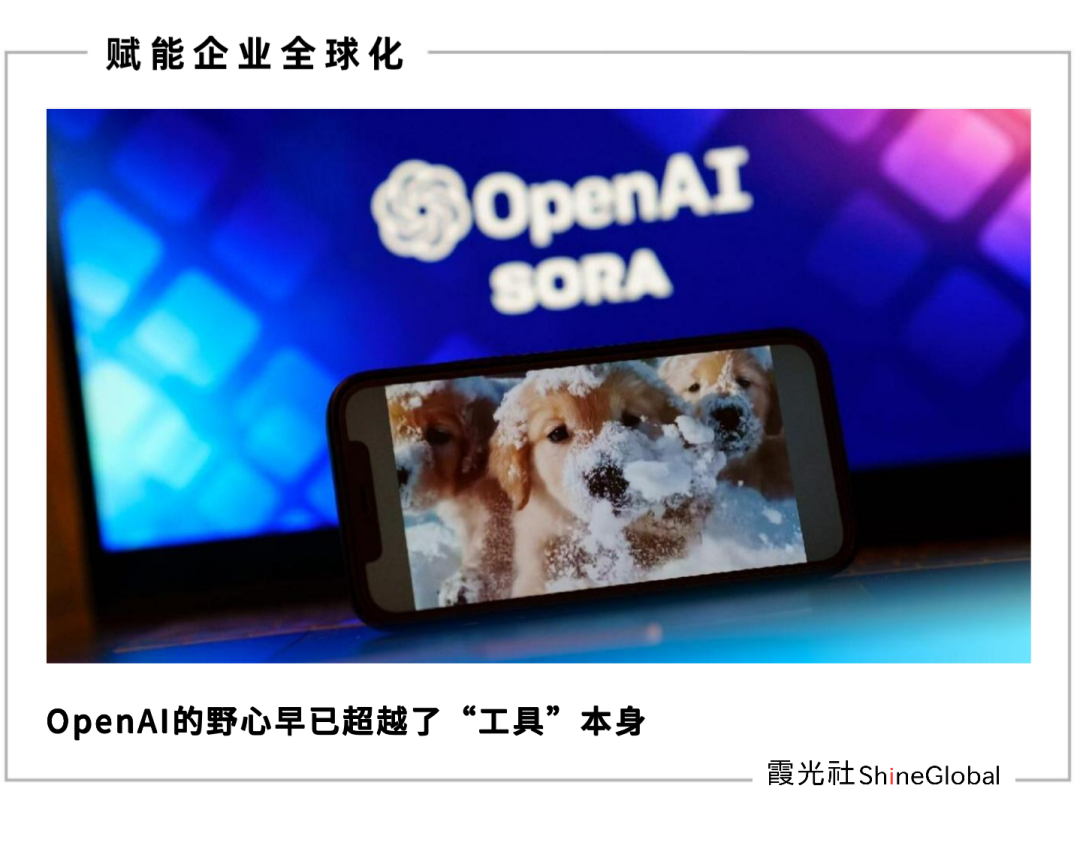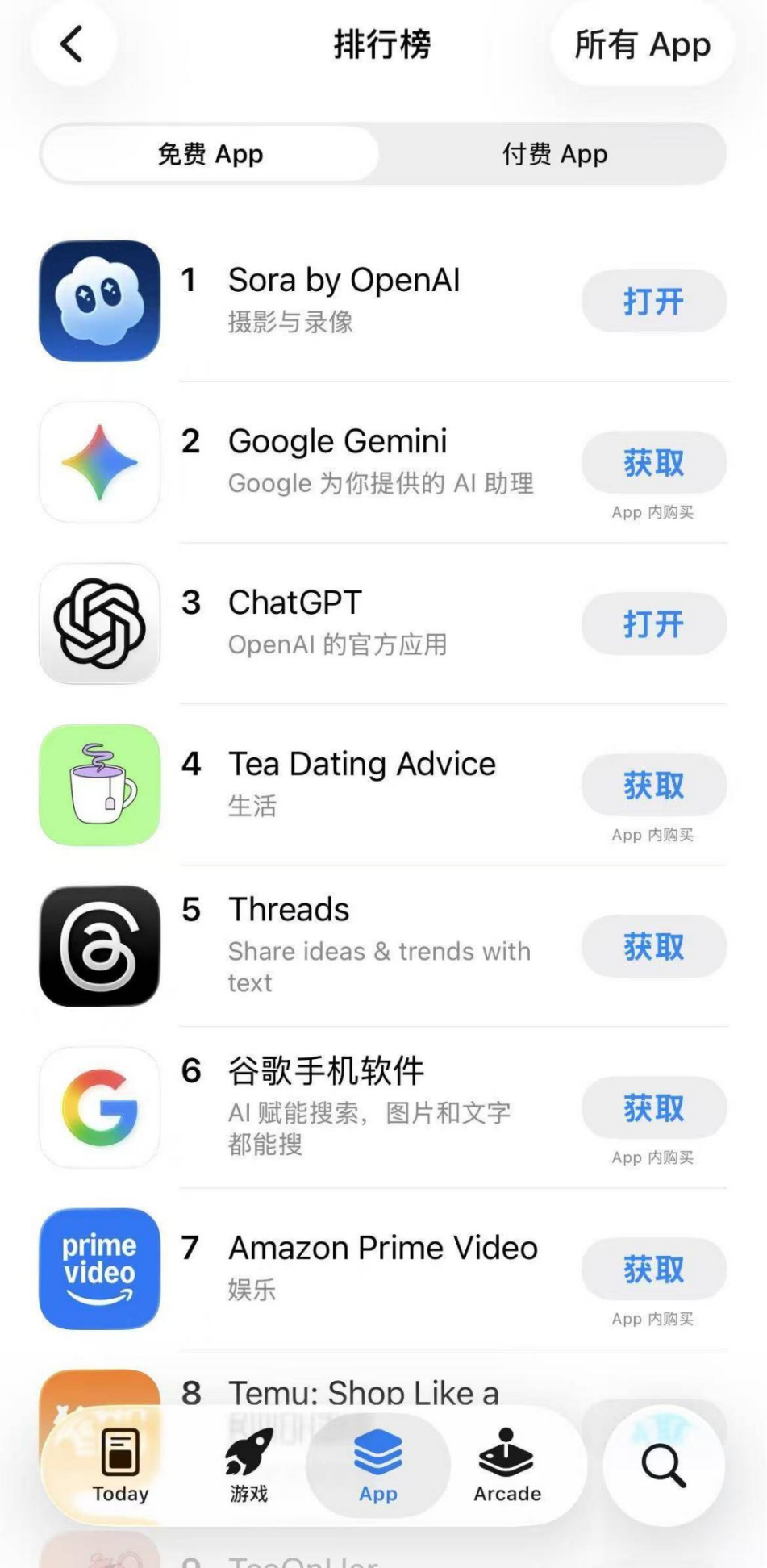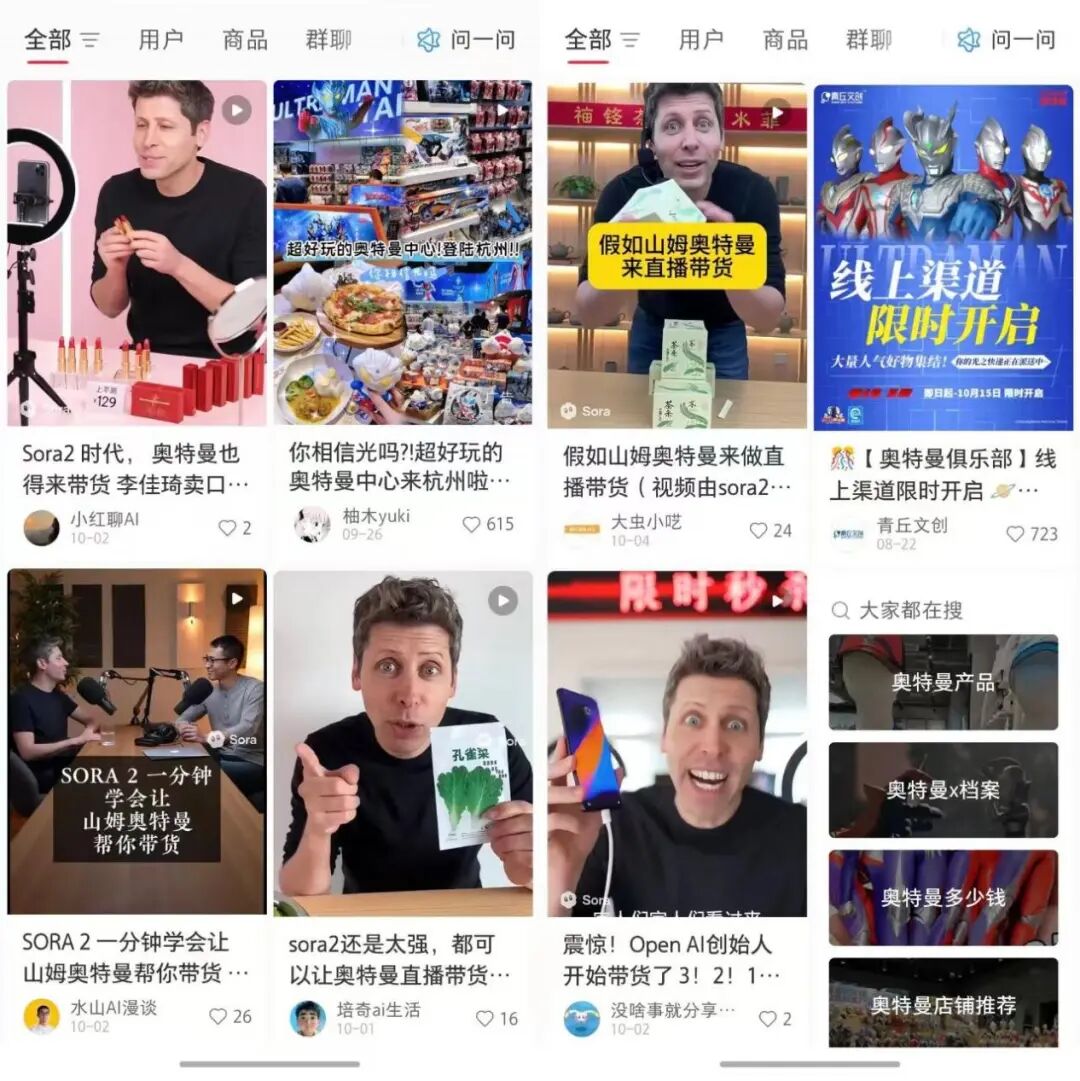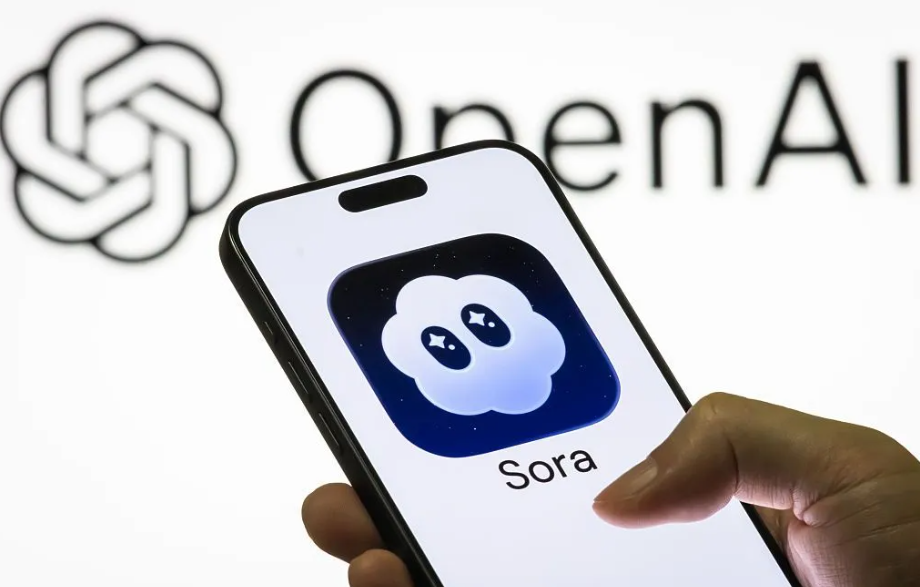Sora2, It's Time for AI to Help You Make Money
![]() 10/17 2025
10/17 2025
![]() 475
475

Author: Xing Fei
Editor: Liu Jingfeng
True game-changers often blaze new trails in uncharted territories.
When OpenAI released demonstration videos of its new-generation AI video model, Sora2, the entire tech community was stunned. The videos, generated in just 10 seconds, featured highly realistic physical logic and seamless multi-angle transitions reminiscent of cinematic camera work. Its capabilities are now on par with those of human professional creators.
In a subsequent research report, Dongguan Securities stated, 'The release of Sora2 and its accompanying social applications marks the integration of AI video generation and social interaction, potentially reshaping the content creation and distribution ecosystem. This could usher in a ChatGPT moment for AI video generation.'
This metaphor struck a chord in the industry. ChatGPT represents a paradigm shift in artificial intelligence, marking a new pinnacle for machine learning models, large training datasets, and computational power.
More impressively, Sora2 is not just a video generation tool but a complete revolution. Industries closely tied to video, such as film and television, social media, and e-commerce, are set for an ecological overhaul, with many business models being reshaped.
For the average person, a more direct question arises: How will Sora2 change the way people make money?

Just four days after its launch, the Sora App claimed the top spot on Apple's U.S. App Store free apps chart, surpassing Gemini and ChatGPT, achieving instant stardom.
According to Appfigures, the Sora iOS app amassed 164,000 downloads in just two days, with 56,000 downloads on its first day.

Caption: App Store Screenshot
The Sora App's explosive popularity stems from its two groundbreaking AIGC social features: Cameo and Remix.
Cameo operates on OpenAI's world simulation models. Users can transport themselves or friends into fantastical settings—ancient Roman coliseums, futuristic cyberpunk cities, or in-game scenarios—by simply providing a basic video clip. The characters then naturally interact within these environments.
Remix is a core interactive feature of the Sora App. When users encounter a video they like, they can click the Remix button to create their own version. For instance, upon seeing a video of Iron Man and Spider-Man, a user could input a new prompt like 'Insert my photo.' Sora then generates a fresh video showing 'me interacting with Spider-Man.' This feature significantly lowers the barrier to participating in trending narratives, enabling everyone to engage in AIGC creation effortlessly.
Additionally, OpenAI CEO Sam Altman personally contributed to Sora's popularity by granting access to his likeness. On international social platforms, Altman has been depicted in various scenarios, from being caught stealing GPUs from a store to dancing in front of the pyramids, fighting Bruce Lee, or playing basketball with Kobe Bryant, with details so realistic they are indistinguishable from reality.
On China's Xiaohongshu platform, some swift bloggers have even featured Altman in live-streamed shopping sessions, with his seamless delivery of the familiar '3, 2, 1, links up!' catchphrase.

Source: Xiaohongshu
With its seamless video output, Sora2 opens up new possibilities across various industries.
Take e-commerce, for example. OpenAI has established a closed-loop business model: 'Content platforms stimulate demand (Sora) → Payment channels ensure transactions (Stripe) → E-commerce platforms supply goods (Shopify/Etsy).' As global acceptance of video-based product recommendations and live-streamed shopping grows, Sora, through the Agentic Commerce Protocol (ACP), is poised to launch a new 'end-to-end' e-commerce model.
OpenAI seems to be reinforcing its e-commerce capabilities. A few days ago, it introduced the 'Instant Checkout' feature, allowing users to purchase products directly through ChatGPT, its AI chatbot. This marks a further acceleration of OpenAI's integration with e-commerce, enabling ChatGPT to complete the full cycle from 'product recommendation' to 'direct payment.'
If, in the future, product display videos and buyer showcase compilations generated by Sora are integrated into this e-commerce loop and connected with mainstream e-commerce platforms via APIs, a new 'people-goods-context' logic distinct from traditional e-commerce platforms could emerge.
Simultaneously, advertising and marketing costs would plummet. Previously, high production costs, lengthy timelines, and professional barriers hindered large-scale expansion for e-commerce sellers. Now, these are no longer obstacles.
Peng Shengcai, CEO of Agent Platform provider Shuxin Technology, pointed out that the emergence of tool-based products like Sora2 could turn previously unviable business models into reality or even directly create new ones.
For instance, launching a product overseas previously required finding agents, establishing distribution channels, and conducting brand marketing—a gradual, step-by-step process. Now, with AI and other emerging technologies, the entire process can be streamlined.
Currently, some emerging companies are leveraging China's robust supply chain and manufacturing capabilities, combined with AI-driven marketing, advertising, and customer service, to bring products to overseas markets. This approach differs radically from traditional overseas expansion models, enabling even 'one-person companies' to complete the entire process. For these businesses, AI acts as a catalyst, making previously unfeasible ventures viable and opening up previously inaccessible markets.
However, this AI-driven e-commerce model also places higher demands on brands.
Peng Shengcai noted that product success previously hinged on 'channel dominance,' with the goal of maximizing channel coverage to ensure consumers could find the product easily. Platforms played a crucial role. But with AI, consumers might simply describe their needs, and AI would handle the rest, diminishing the value of channels while amplifying the importance of brands.
In this new paradigm, the only way to secure a position in AI-driven consumption is to build a strong brand. 'Previously, we spent heavily on marketing and advertising. Now, we just need to focus on our products and services and distribute them to AI via MCP. AI will then match them precisely to user requests,' Peng explained. 'This is nearly revolutionary for the industry and, in the long run, benefits the healthy development of the industry ecosystem.'
(Note: MCP stands for Model Context Protocol, an open-source standard for connecting AI applications to external systems. Based on MCP, AI applications can connect to data sources, tools, and workflows, enabling access to critical information and task execution.)

More disruptively, the Sora App, powered by Sora2 and modeled after TikTok's swipe-based interface, lowers the barrier for consumer use.
Many believe it 'disrupts the short video industry,' posing a significant threat to the business models of advertising, celebrity endorsements, film and television, and creative industries.
In September, TVB released a 100% AI-generated short drama, 'In My Heart, You Are Unique.' The protagonist, supporting actors, scenes, and soundtrack were all AI-generated. In this production, AI handled all roles traditionally filled by 'screenwriters, directors, art directors, editors, and post-production teams,' even playing a significant role in operations and advertising distribution.
Technically, Sora can now generate 25-second short videos (15 seconds for regular users on the app and web, 25 seconds for Pro users on the web) with near-4K detail, sharper imagery, smoother frame transitions, and multilingual synchronous translation. Google's upgraded Veo2 also offers 4K cinematic quality and videos exceeding two minutes. These tools have significantly enhanced content production efficiency and quality.
As AI becomes deeply involved in key aspects of short drama production, it becomes the core driver of cost reduction and efficiency gains. On the production side, AI handles scriptwriting and storyboarding, virtual production, and intelligent editing, drastically shortening the timeline from concept to final product. On the operational side, AI generates vast amounts of marketing material for A/B testing, enabling precise targeting, while user data analysis further informs content optimization.
Traditional short drama production, with a 2-3 month timeline and a $70,000-$280,000 trial-and-error cost, represents the industry's cost baseline. However, AI-driven short dramas can now be produced in 10-15 days at a cost of $8,500-$21,250, reducing per-episode costs by up to 90%.
These developments inject fresh imagination into the booming short drama industry.
Meanwhile, Sora's influence extends to the social sector.
Its swipe-based interaction has earned it the moniker 'AI-powered Douyin (TikTok).' Users can create content by uploading images with text prompts or using the Cameo feature to generate videos based on their or their friends' likenesses. This strong interactivity and sense of intimacy endow the Sora App with robust social attributes.
Once the 'browse-inspire-create-share' loop is activated, users become deeply engaged with the platform. Each creation contributes new material and templates, fostering a self-sustaining content ecosystem—a 'user data flywheel.' 'AI + social' could become the dominant future format.

Sora2's impact on the advertising industry has also drawn attention, though its disruptive force remains subdued for now.
Peng Shengcai offered an example: In advertising, content production—including copywriting, imagery, and video—represents the end of the supply chain, typically handled by specialized teams with roles like planners, artists, directors, and editors. Sora2 might affect only the video production segment, which accounts for less than 1% of the entire advertising chain. Thus, he believes 'Sora2 is unlikely to cause massive disruption across the entire chain.'
However, Peng noted that Sora2's introduction could lead to cost reductions and efficiency gains, enabling some to reap short-term benefits.
For instance, if advertisers maintain their video procurement budgets, those proficient in AI tools like Sora2 could increase production efficiency tenfold or even a hundredfold. With unchanged pricing but lower costs, their profits would rise.
'But this dividend (window of opportunity) is short-lived. As supply increases, competition will intensify. If someone offers 10 videos at a given price, others will soon offer 50 or 100. During the brief period when most people haven't mastered AI video generation, some will indeed profit. However, this window won't last long—perhaps six months,' Peng predicted.

Sora2's greater contribution lies in offering the industry a new monetization approach.
For years, leading global large models and vertical applications have primarily relied on a 'subscription-based' model, charging fixed monthly or quarterly fees for a set number of API calls.
Sam Altman, however, announced in a blog post that the company would introduce an 'IP revenue-sharing' mechanism. This involves two steps: first, granting copyright holders finer control over how their IP is used, allowing them to specify whether and how characters can appear; second, exploring revenue-sharing models where copyright holders receive a portion of the earnings generated when users create videos featuring authorized characters.
This approach instantly broadens possibilities. For years, copyright giants like Disney, Marvel, Warner Bros., and Nintendo have aggressively defended their IP against AI tool misuse. For example, Midjourney, a text-to-image AI application, faced lawsuits from Disney, Universal Pictures, and Warner Bros. between June and September this year.
And Sam Altman transformed the "adversarial" relationship between the two sides into a "win-win" situation. For the aforementioned copyright giants, if their own IPs can be used by creators in more vertical fields, it will undoubtedly further expand their influence and also allow them to earn a certain share of the revenue in the process. For content creators active online, legally using classic IP images provides them with richer creative inspiration and can also, to a certain extent, avoid homogenization.

Drawing on the successful experience of YouTube, this model is also conducive to the healthy development of the entire industry. YouTube has spent a significant amount of time establishing a mature copyright identification and revenue-sharing system. When bloggers use copyrighted music or video clips in their works, YouTube automatically identifies and records them, and then distributes the advertising revenue generated from these videos to creators, the platform, and copyright owners according to agreed-upon ratios.
This multi-win approach has also helped YouTube become one of the most influential video websites globally. It is predicted that YouTube's global monthly active users (MAU) will exceed 2.85 billion by 2025, covering 51% of internet users worldwide.
Sam Altman's vision is to establish a similar revenue-sharing system. Users create video content with the help of Sora2, and the platform records and tracks each piece of content. If authorized IPs are involved, revenue is distributed according to agreed-upon ratios.
According to the "2025-2030 China AI Video Industry Panoramic Research and Investment Prospect Forecast Report" released by the China Research and Intelligence Industry Research Institute, the global AI video market size reached $42 billion in 2023.
When creators succeed, the platform succeeds. Both AI-generated images and AI videos have been accepted by an increasing number of creators. If Sam Altman's vision comes true, the Sora App will no longer be a simple tool but a new digital economy ecosystem connecting IP licensors with billions of creators worldwide and directly accessing a market worth tens of billions of dollars.
On the other hand, "the screen is like a mountain." When AI-generated videos are realistic enough to "pass as real," and when seeing is no longer believing becomes the norm, distinguishing between virtual and real will become a challenge.
One practitioner's viewpoint is, "There's no need to deliberately distinguish between what's real and what's fake. Learning to adapt is the norm."
For example, in the live-streaming e-commerce sector, virtual anchors have become very common. According to statistics and forecasts from market research firm QYResearch, the global market sales of virtual idols and virtual anchors reached $1.083 billion in 2023 and are expected to reach $5.129 billion by 2030.
"Many people no longer deliberately distinguish whether the anchor is real or virtual, or have given up on this action. After all, my consumption decisions don't depend on the person's image on the screen but more on how I feel about their attitude, tone, and atmosphere, or on the level of trust I have in the product brand in the live-streaming room," the practitioner said.








